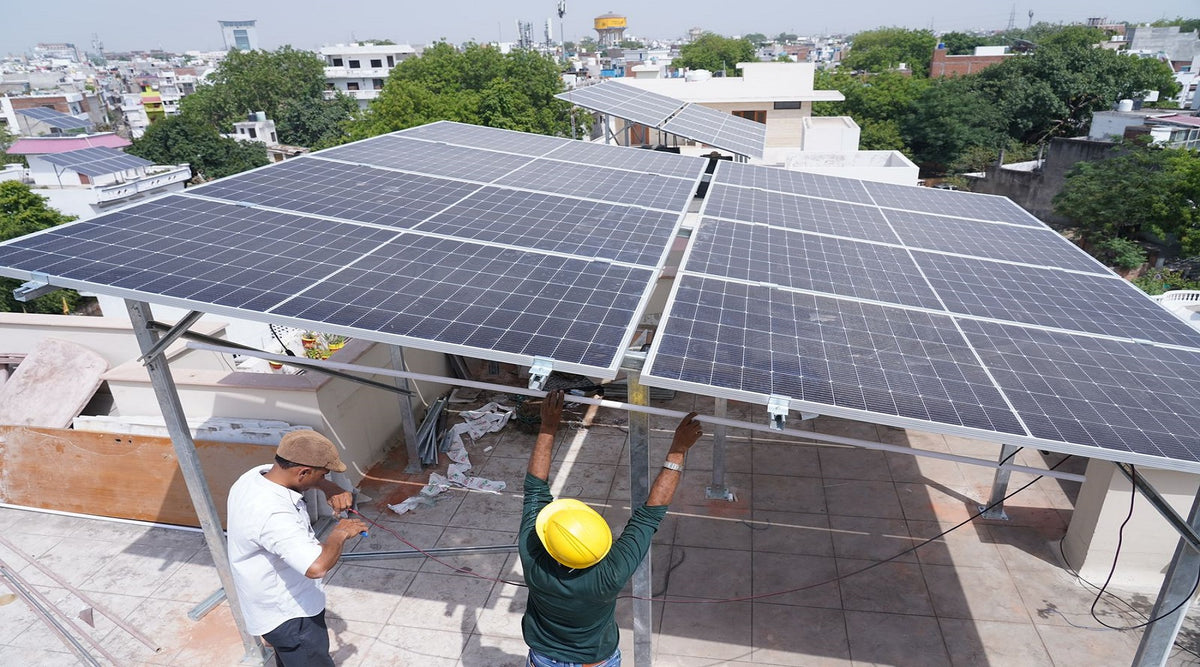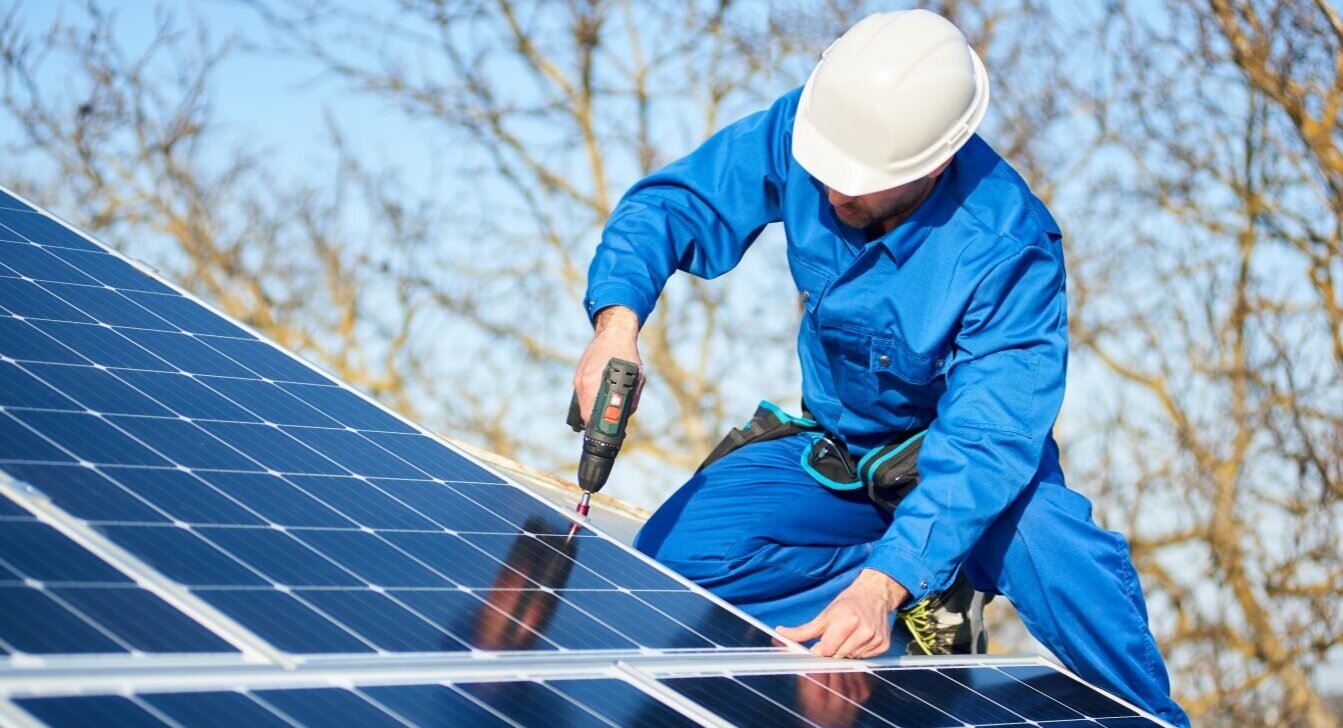Solar Home Systems: Home Rooftop Photovoltaic Systems Are An Excellent Method To Lower Energy Costs And Promote Sustainability
Setup Process and Requirements
Preparing Your Roofing System for Solar Panels
Before the very first photovoltaic panel kisses your roof, an extensive evaluation is necessary. Envision your roofing system as a blank canvas-- it needs to be durable and ready to accept the change. Roofing age, product, and angle play essential roles. Have you ever went up to inspect your shingles? This simple act can expose hidden damage or weak points that could complicate installation. A well-prepared roofing system not only supports the panels however also makes sure durability and safety.
Step-by-Step Setup
- Site Assessment: Experts evaluate sunshine exposure, shading, and roofing system layout to optimize panel placement.
- System Style: Customized solar selections are created to match your energy needs and roofing system structure.
- Allowing: Necessary authorizations are protected-- believe of this as getting the green light from regional authorities.
- Installing Installation: Racking systems are anchored firmly to your roof, ready to hold the photovoltaic panels.
- Panel Positioning: Panels are located and bolted down, aligning completely to capture optimum sunlight.
- Electrical Wiring: Panels link to your home's electrical system through an inverter, converting sunlight into functional energy.
- Inspection and Activation: Last checks guarantee whatever functions effortlessly before flipping the switch.
Important Requirements for a Smooth Setup
- Structural Integrity: Your roofing system needs to support the weight of the panels and racking system, normally around 2-4 pounds per square foot.
- Sunlight Direct Exposure: Preferably, your roofing system needs to get a minimum of 6 hours of direct sunlight daily, devoid of shading by trees or buildings.
- Area Availability: Adequate roofing system area makes sure enough panels can be set up to satisfy your energy objectives.
- Electrical Compatibility: Your home's wiring and electrical panel need to accommodate the new solar system securely.
What Can Go Incorrect-- and How to Prevent It
In some cases, even the best-laid plans can strike a snag. Image a neighbor whose solar panels were installed without checking for roofing leaks. Months later, water damage emerged, turning a monetary investment into a headache. To sidestep such mistakes, firmly insist on a professional roofing evaluation and clear communication with your installer.

Quick List Before Setup
| Requirement | Why It Matters | Idea |
|---|---|---|
| Roof Condition | Makes sure assistance and toughness | Fix any damages beforehand |
| Sun Exposure | Maximizes energy production | Trim neighboring trees if needed |
| Electrical System | Supports system integration | Seek advice from a licensed electrician |
| Permits | Compliance with local guidelines | Start early to avoid delays |
Does the idea of changing your roof into an individual power plant thrill you? It should. With the right preparation and understanding of the installation process, turning sunshine into cost savings can be a smooth journey instead of a labyrinth of confusion.
Unlocking the Power: Why Residential Solar Panels Transform Residences
Imagine waking up to sunshine streaming through your windows, knowing that those rays are sustaining your entire home. Residential solar panels do not just capture energy; they harness a silent revolution. But exactly what makes them a game-changer beyond the obvious cost savings on electrical power bills?
The Subtle Gains Beyond Savings
Electrical power bills drop, yes, however the real magic lies deeper. Photovoltaic panel produce a buffer versus the unpredictable spikes in energy expenses. Have you ever felt caught by soaring utility rates? Solar power offers a kind of freedom, a monetary guard that grows stronger each year. Plus, homes geared up with solar systems typically see an uptick in worth-- yet this isn't practically dollars. It's about owning a piece of the future.
Environmental Effect Woven Into Daily Life
Every panel set up is a statement, a quiet rebellion versus carbon footprints. Unlike conventional source of power that choke the air with contaminants, solar energy is a breath of fresh air-- actually. Think about the stories of areas when shrouded in smog, now basking under clearer skies thanks to widespread solar adoption. This isn't simply technology; it's an environmental renaissance.
Professional Tips for Optimizing Solar Effectiveness
- Position panels to record the sun's trajectory throughout the year, not just peak hours.
- Routinely look for shading from new tree growth-- shadows can significantly lower output.
- Consider incorporating a solar battery to store excess energy for nighttime usage.
- Optimize inverter settings to stabilize peak efficiency with longevity.
Unforeseen Advantages That Frequently Go Unnoticed
Sound pollution is another sneaky offender in metropolitan living. Solar panels operate silently, unlike generators or a/c systems that clamor away. This subtle shift can change your home environment into a sanctuary of calm. And what about strength? During grid failures, planetary systems geared up with backup services can keep necessary home appliances humming, a modern lifeline when the unforeseen strikes.
Breaking Down the Financial investment: What to Expect
| Advantage | Effect | Long-Term Worth |
|---|---|---|
| Energy Self-reliance | Lowers reliance on changing grid power | Steady and foreseeable energy costs |
| Ecological Contribution | Lower carbon emissions | Supports sustainable living worths |
| Home Worth Increase | Destination to eco-conscious buyers | Potentially higher resale cost |
| Energy Effectiveness | Optimizes home power use | Decreased waste and better resource management |
Is Solar a Suitable For Every Home?
Not all roofs are equivalent. Some deal with structural limitations or are shaded by surrounding buildings. However before dismissing the idea, consider creative installing options like ground varieties or solar shingles. Concern your presumptions: can your home's orientation or roof angle be adjusted to embrace this technology? Typically, the genuine challenge isn't physical-- it's the doubt to reconsider energy routines.
Exploring the Spectrum of Residential Solar Panel Technologies
Ever stood beneath a solar panel, questioning how such a streamlined piece of technology turns sunlight into usable energy? The answer depends on the distinct kinds of solar panels offered for domestic usage, each boasting its own quirks and efficiencies. Think of a bright afternoon where the sun's rays strike a roofpaneled with monocrystalline cells, those deep black beauties understood for their high efficiency and longevity. They whisper guarantees of robust energy output and a smooth look that complements contemporary homes.
Monocrystalline Solar Panels: The Elite Performers
Monocrystalline panels are crafted from a single silicon crystal-- think of it as the solar panel equivalent of a perfectly cut diamond. This pureness allows electrons to flow easily, boosting energy performance. Property owners typically prefer these panels for their smooth, uniform appearance and remarkable efficiency in restricted area. However, their production is energy-intensive, showing an intriguing paradox: high output comes with a large production footprint. The reward is a panel that can quietly power your home for years.
Polycrystalline Solar Panels: The Budget-Friendly Workhorses
Polycrystalline panels resemble a mosaic of silicon pieces melted together, leading to a bluish color with a speckled texture. They're less efficient than their monocrystalline cousins-- about 15-17% performance compared to 20%+-- however their cost-effectiveness makes them enticing. If your rooftop stretches kindly, these panels might simply be the useful, wallet-conscious choice. If space is a luxury, the lower energy density might leave you yearning for more.

Thin-Film Solar Panels: Versatility in Focus
Thin-film technology breaks the mold, literally. These panels are light-weight, versatile, and can be incorporated into non-traditional surfaces like curved roofing systems or perhaps windows. Their performance hovers around 10-12%, but their versatility is unrivaled. Image a home where solar panels mix perfectly with architectural lines rather than sitting like large appendages. Nevertheless, the compromise depends on their fairly short life-span and the requirement for more surface location to harvest the very same amount of energy as crystalline panels.
Secret Factors To Consider When Choosing Solar Panel Tech
- Roofing system space: Limited area prefers higher performance panels like monocrystalline.
- Budget plan restraints: Polycrystalline offers a balance in between expense and performance.
- Style flexibility: Thin-film suits innovative installations however needs more surface area.
- Environment aspects: Some innovations handle heat and shade better than others.
Professional Tips for Optimizing Solar Innovation Choice
- Assess your roof's orientation and shading patterns before picking a panel type.
- Think about the degradation rate-- some panels lose performance much faster, affecting long-term output.
- Element in temperature coefficients; panels carry out differently under heat tension.
- Don't ignore the inverter compatibility; matching panel innovation with inverter type takes full advantage of energy harvest.
Have you pondered how a minor tilt angle or panel positioning can influence your energy harvest? It's a subtle dance in between sunlight, technology, and architecture. Understanding these subtleties changes an easy roof into a powerhouse of sustainable energy.
Environmental Effect and Energy Cost Savings
Picture the sun as an endless reservoir of power, quietly waiting above to fuel your home. Residential solar panels use this huge ocean of energy, turning sunshine Solar Module Installation into electrical energy without the typical luggage of pollution or carbon emissions. It's not just about slashing your electrical bill; it has to do with diminishing your carbon footprint to an almost unnoticeable speck.
However how deep does this ecological advantage run? Consider this: traditional energy sources typically depend on burning fossil fuels, which launch greenhouse gases that trap heat in the environment. Solar panels, by contrast, produce clean energy silently and steadily. Over their 25-30 year life expectancy, a common residential system can offset a number of tons of CO.
2-- the equivalent of planting lots of mature trees.
Energy Savings: More Than Just Numbers
Energy cost savings from photovoltaic panels extend beyond the apparent month-to-month energy decreases. The genuine magic occurs when you understand the interaction between usage practices and solar production:
- Peak sun hours align with daytime energy usage, lowering dependence on grid power when electrical energy is most expensive and carbon-intensive.
- Net metering allows excess electricity to flow back to the grid, turning your rooftop into a mini power plant and earning credits.
- Energy storage options, such as home batteries, can keep surplus solar energy, raveling supply throughout cloudy days or nighttime.
Subtle Nuances That Matter
Have you ever questioned why two neighboring homes with identical solar setups report various cost savings? The angle of your roofing system, shading from trees, and even panel tidiness subtly but considerably affect efficiency. An often overlooked fact: even a thin layer of dust or pollen reduces output by as much as 5-10%-- a little information with a big impact.
The environmental gains aren't just about tidy energy. Manufacturing photovoltaic panels needs energy and products, however advances in technology now concentrate on lessening this "embodied energy." Panels made with recycled products and longer life-spans tip the scales even more in favor of sustainability.
Specialist Tips for Taking Full Advantage Of Effect
- Enhance panel orientation and tilt to capture the optimum sunlight based on your geographical area.
- Integrate clever home energy management systems to synchronize energy use with peak solar production.
- Routinely inspect for shading changes brought on by new foliage development or building and construction, which can silently wear down effectiveness.
- Think about incorporating solar with energy-efficient appliances to magnify total savings.
| Factor | Effect on Energy Savings | Ecological Implication |
|---|---|---|
| Panel Efficiency | Straight proportional to energy output | Greater effectiveness decreases land and resource usage |
| Shading | Can lower output by as much as 25% | Less clean energy produced, more grid dependence |
| System Size | Figures out potential energy generation | Oversizing can squander products; undersizing limits savings |
| Energy Storage | Enhances self-consumption | Minimizes requirement for fossil fuel backup power |
Solar panels do more than power homes-- they weave a story of resilience, development, and environmental stewardship. They welcome property owners to ask themselves: How much am I going to purchase a future where tidy energy is the standard, not the exception?